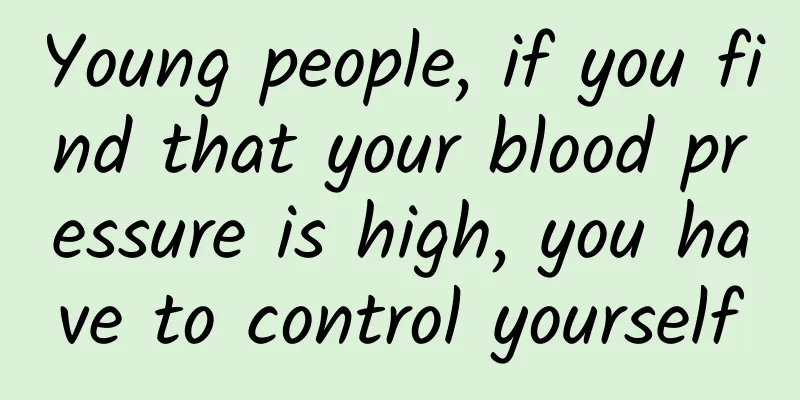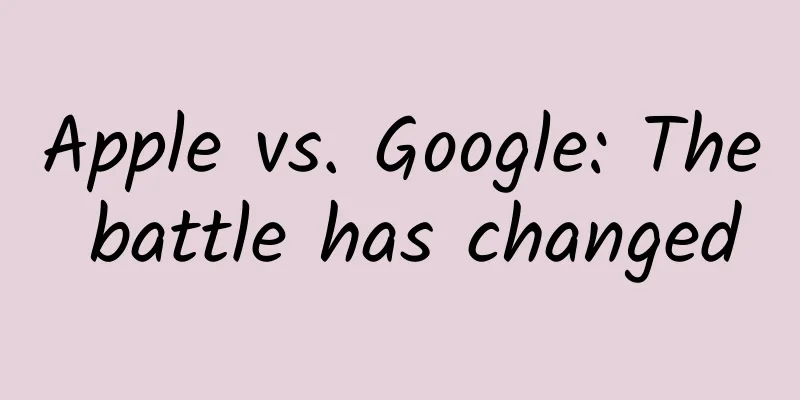Do cats and dogs really get jealous?

|
© PoC – Cat Welfare at Heart Leviathan Press: Given the cold and expressionless expressions of cats, it is difficult for us to see emotional clues from their faces. Dogs are indeed more expressive in this regard. Whether it is their facial expressions or body language, they can show some characteristics that we humans seem to be able to "read". However, how can we identify that certain behaviors of cats and dogs are jealous? In other words, how do their behaviors correspond to "jealousy"? Whether using the best explanation reasoning or fMRI, they are actually infinitely approaching the rationality of a certain explanation. My friend Laurette has two cats named Zhanna and Pixie. When Laurette pets Zhanna, Pixie attacks her. If we draw analogies with humans, it’s natural to interpret Pixie’s behavior as jealousy, but perhaps Pixie is just trying to assert dominance or establish a sense of territory. There are no experimental studies on whether cats get jealous, but research on dogs supports the idea that they do get jealous. (journals.plos.org/plosone/article?id=10.1371/journal.pone.0094597) The logic of assigning mental states to nonhuman animals is complex. We cannot use deductive reasoning, because there is no universal rule that tells us that an animal is jealous when it performs a particular behavior. Probability theory is also useless, because we do not know the probability that an animal will perform a certain behavior when it is jealous, which is necessary to calculate the probability of an animal being jealous. Instead, we can use a form of reasoning that philosophers call “inference to the best explanation.” If the hypothesis that cats and dogs are jealous provides the best explanation of all the available evidence, then we can reasonably infer it. (www.cambridge.org/core/journals/behavioral-and-brain-sciences/article/abs/explanatory-coherence/E05CB61CD64C26138E794BC601CC9D7A) Several factors come into play in determining the best explanation. First, how much of the situation and evidence can one hypothesis explain? For example, the hypothesis that Pixie is jealous of Jenna explains why Pixie attacks Jenna whenever Loret caresses her. Secondly, are there other hypotheses that can explain more phenomena? For example, maybe Pixie just wants to be dominant, but that doesn't explain why Pixie's aggression toward Jenna became more frequent when her owner noticed her. Third, is the hypothesis in question simpler than other hypotheses; in other words, does it make fewer assumptions? An example of a non-simple assumption is that Pixie attacks Jenna because Pixie is controlled by aliens, which requires additional assumptions about the existence and actions of aliens. Fourth, does this hypothesis receive additional support from an explanation of its truth? Ideally, we could identify and confirm the psychological and neural mechanisms that make Pixie jealous and attack Jenna. If we add up all the above factors, we might be able to accept the conclusion that Pixie is jealous because it has overall explanatory coherence. © Bright Side ﹡﹡﹡ Before deciding whether cats and dogs can be jealous, we should have some idea of what jealousy is. There is no standard definition of jealousy, but psychological research suggests that any definition should be superseded by three aspects of the concept in question: Standard examples, typical features, and explanations. (pubmed.ncbi.nlm.nih.gov/26235459/) There are many well-known literary examples of jealousy, such as William Shakespeare's play Othello and Daphne du Maurier's novel Rebecca (1938), and most adults can identify examples of jealousy in their own lives. © Arts & Sciences - The University of Alabama Typical characteristics of jealousy include the person who creates the jealousy, the loved one who triggers the jealousy, and the rival who is envied. Othello is jealous because he thinks his wife, Desdemona, is having an affair with the soldier Cassio. Jealousy is different from envy in that envy involves only two people: envy also requires a rival to threaten the relationship. The typical emotions that accompany jealousy include fear of loss, feelings of relationship threat, sadness, anger, anxiety, and insecurity. Attributing them to jealousy explains why people experience these emotions and why they may behave in different ways, from withdrawal to aggression to murder. The first and weakest piece of evidence that cats and dogs are jealous is that most of their owners think they are jealous. One study found that 81% of dog owners and 66% of cat owners said their pets were jealous, which could be explained if we assume that pets really do get jealous. (www.tandfonline.com/doi/abs/10.1080/02699930701273716) Another hypothesis is that owners who are affectionate toward their pets exaggerate their pets' psychological complexity. For example, 74% of people report that their dogs sometimes feel guilty, but careful experiments show that behaviors that appear to be guilty (such as a dog pressing a paw to its head) are better explained as compliance out of fear of punishment. Whether the dog has actually done something wrong or not, their behavior is the same. Many religious pet owners believe that their dogs and cats have souls, but there is no evidence to prove this. (pubmed.ncbi.nlm.nih.gov/19520245/) Dogs' behavior is similar to that of children under two years old. A 2014 study by psychologists Christine Harris and Caroline Prouvost of the University of California, San Diego, provided stronger evidence for jealousy in dogs by adapting an existing experimental design that had been used to identify certain forms of nonverbal jealousy in six-month-old infants. (journals.plos.org/plosone/article?id=10.1371/journal.pone.0094597) Infants responded more negatively when their mothers paid attention to another baby than when their mothers paid attention to a book. Similarly, when dogs watched their owners interact with a lifelike fake dog, they showed more aggression, such as biting and snapping, and sought attention more frequently and interrupted the interaction. © Treehugger In contrast, dogs whose owners were paying attention to a Halloween lantern or a book showed no more aggression or attention-seeking behavior. Skeptics might worry that the dogs were simply reacting to the unfamiliar object of the fake dog, but the dogs in the experiment did not seem to realize that the dogs were fake and sniffed their butts. However, the dog's behavior could also be driven by psychological states other than jealousy, such as a desire to establish dominance over the new dog, or resentment that the fake dog was challenging its territoriality. In 2018, Hungarian animal behaviorist Judit Abdai and his colleagues modified the experiment to reduce the possibility of other explanations. The rival dog targets that the owners showed affection for were real dogs, not fake dogs, which ruled out the hypothesis that the dogs' aggression was simply due to unfamiliar objects. To avoid the dogs' territorial awareness being aroused, the experiment was conducted in an unfamiliar location rather than in the dogs' homes. The experiment also compared the dogs' behavior when facing familiar and unfamiliar rival dogs, eliminating associations with hierarchy to control for factors related to dominance. Other experimental arrangements ensured that the dogs' reactions were unlikely to be motivated by protectiveness, playfulness, or boredom. (pubmed.ncbi.nlm.nih.gov/29891847/) The experimenters concluded that the dogs' previously described "jealous" behavior was similar to that of children under the age of two. However, the researchers declined to conclude that the dogs were actually experiencing jealousy, preferring the more cautious conclusion that the dogs were displaying jealous behavior. ﹡﹡﹡ What are the psychological and neural mechanisms that make dogs jealous? When detectives, juries, and judges try to determine whether a defendant is guilty or not, they consider evidence that is explained by both motive and the hypothesis that the defendant did commit the crime. For example, if there is evidence that the defendant felt angry, hateful, or jealous of the victim, then the hypothesis that the defendant murdered the victim becomes more likely. Similarly, scientists look for more than just evidence that can be explained by a hypothesis: they also try to explain the hypothesis by the underlying mechanism. Charles Darwin not only provided evidence for the evolution of species, but also provided a potential mechanism for evolution caused by variation, inheritance, and natural selection. Subsequently, genetic theory provided the mechanism of variation and inheritance, and the DNA mechanism of molecular biology further deepened genetics. Likewise, the hypothesis that dogs are jealous can be furthered if we can explain why dogs are jealous in terms of psychological and neural mechanisms. The relevant psychological mechanisms are attachment and fear of loss. There is ample evidence that pets become emotionally attached to their owners, that they show distress when their owners leave them alone, and that they occasionally engage in grief behaviors when their owners die. Next, pets’ attachment to their owners explains why they feel threatened by their owners’ attention to other animals. Pet owners reported that the level of jealousy they observed in their cats and dogs varied with how much those cats and dogs liked their owners. This observation may also explain why people think dogs are more jealous than cats, as dogs are generally more attached to their owners than cats. (journals.sagepub.com/doi/10.2466/pr0.1982.51.2.351) © PetMD People are increasingly using underlying neural mechanisms to understand psychological mechanisms. It is foolish to look for a center in the brains of humans and other animals that controls jealousy, because emotions and other kinds of cognition involve interactions between many brain regions. Nevertheless, brain scanning techniques such as functional magnetic resonance imaging (fMRI) are being used to identify brain regions that interact to produce mental states such as emotions. (www.ncbi.nlm.nih.gov/pmc/articles/PMC4329228/) Activation of the amygdala does not ensure that the emotion is jealousy, as it is also associated with other emotions. More recently, experimenters have trained dogs to stay still in fMRI machines, which can identify brain regions that are active during demanding tasks. In 2018, psychologist Peter Cook of the New College of Florida and his colleagues described a brain-imaging experiment they thought provided evidence that dogs can get jealous. They scanned the brains of dogs watching their caretakers reward fake dogs with food and predicted that these dogs would show greater activation in their amygdala than when their caretakers simply placed food in a bucket. They also predicted that dogs that had previously been judged to be more aggressive would show greater amygdala activity than dogs that were less aggressive in temperament. Both predictions were confirmed. (www.wellbeingintlstudiesrepository.org/cgi/viewcontent.cgi?article=1319&context=animsent) In and of itself, this experiment doesn't prove that a dog who had a brain scan was jealous of the fake dog, because there are other possibilities. The dog could simply be reacting out of annoyance, jealousy, hostility, or injustice, rather than jealousy. Activation of the amygdala doesn't ensure that the emotion is jealousy, because the amygdala is also associated with other emotions, such as anxiety, anger, fear, and even some positive emotions. However, this experiment does have relevance to whether dogs get jealous, because it points to a neural mechanism that could explain how jealousy develops in dogs. When a dog sees its owner showing generosity to another dog, it responds to the situation by activating neurons in parts of the brain associated with negative emotions and aggression. Activation of the amygdala can lead to aggressive behaviors, such as growling and biting. More research is needed in humans and pets to provide more details about the neural mechanisms of jealousy, but Cook's study is a start. ﹡﹡﹡ Do these studies prove that dogs can be jealous? Where does the burden of proof lie? In legal trials in the British judicial system (which is also used in other countries such as the United States and Canada), there are two different standards of proof. In criminal proceedings, the prosecution must prove the defendant's guilt beyond a reasonable doubt. This standard is adopted because of the moral judgment that it is much worse to convict an innocent person than to convict a guilty person. This is the rationale for the presumption of innocence. In contrast, the standard of proof in civil cases is simply “preponderance of evidence.” If one person sues another, the verdict is based on whether the totality of the evidence supports the plaintiff’s claims, without requiring the verdict to be beyond a reasonable doubt. Similarly, in scientific debates, where there are no dire practical consequences for accepting either conclusion, the burden of proof should be preponderance of the evidence, not reasonable doubt, and in such cases the preponderance of the evidence can be assessed by explanatory coherence. © The Verge My current assessment is that there is still reasonable doubt about whether dogs are jealous. Their behavior observed in daily life and scientific experiments is probably not because they perceive a rival as a threat to the pet-owner relationship, nor because of a combination of emotions such as fear, anger, and sadness that add up to jealousy. However, I think the preponderance of evidence from behavioral experiments, brain imaging, and owner observations supports the conclusion that dogs do get jealous. This hypothesis provides a more coherent explanation for all of these types of evidence, while other seemingly simpler explanations that avoid attribution to jealousy are less coherent. But the question of whether dogs are jealous or not has to do with the complexity of animal cognition and the vexing question of consciousness. If non-human animals are thought to feel jealous, the objection is that they don’t have the cognitive complexity to feel jealous. For adults, jealousy requires the judgment that my relationship with my beloved is threatened by a rival’s interest in the beloved. Cats and dogs don’t even have self-awareness, as evidenced by their inability to recognize themselves in a mirror. So they don’t even have a full concept of “I,” let alone the cognition of a relationship involving three people: the lover, the beloved, and the rival. © Giphy Yet infant research shows that by 18 months old, children can begin to recognize themselves in a mirror, but jealousy sets in long before that. Jealousy doesn’t require full self-awareness, just a little awareness of being in a relationship and being different from others. (www.sciencedirect.com/science/article/abs/pii/S0273229700905240) Like infants, cats and dogs are capable of this level of awareness, as evidenced by the way they use and touch their bodies, such as when cats lick themselves to clean themselves. Pets may not be able to describe their relationship with their owners in words, but many behaviors indicate that an emotional bond does exist. When this bond is challenged, such as when a pet senses its owner's interest in another pet, it can be enough to trigger an emotion that is at least similar to jealousy in humans. The conclusion that pets can experience jealousy cannot be ruled out by cognitive issues. Similar reasoning could prove that pets have conscious experiences of jealousy, not just jealous behaviors. This conclusion makes a lot of sense when we think of ourselves as conscious, since each of us has a range of conscious experiences, including pain, emotions, thoughts, and self-awareness. Despite the protests of behaviorists and other skeptics about the existence of consciousness, there is no good explanation for your experiences and behavior other than that you are, in fact, conscious. Assuming that other people are conscious is riskier because you cannot experience what other people experience. However, other people share similarities with you in behavior and measurable brain processes, which makes the idea of other people being conscious very plausible. This comparison is not simply a weak argument from analogy. Rather, the analogy between the explanation of one’s own behavior and the explanation of others is just one of the components of the conclusion that the best explanation of others’ words and actions is that they are conscious. The analogy weakens when we try to argue that infants are conscious, but we know that their brains have very similar structures and functions for emotions to those of adults. We know similarly about other mammals, such as cats and dogs, which have brain regions such as the amygdala and cerebral cortex that are involved in emotions in humans, although the prefrontal regions are larger in humans. There may be some reasonable doubt that cats, dogs, and infants are not truly conscious, but the preponderance of the evidence suggests that they are. Therefore, the conclusion that pets can experience jealousy cannot be ruled out by the consciousness problem and the cognitive complexity problem. The above experiment only discussed whether dogs can be jealous, but did not study whether cats can also be jealous. Dogs are larger than cats, and in line with this, the number of neurons in their brains is about twice that of cats. However, cats have the same brain structure as dogs and other mammals, so we shouldn’t expect any differences in their emotions based on brain structure alone. (pubmed.ncbi.nlm.nih.gov/29311850/) © From The GENESIS On the other hand, dogs have developed emotional bonds with humans over the course of about 20,000 years of evolution, and they have acquired cognitive and emotional abilities that cats do not have. Dogs are generally more caring and attached to their owners than cats, so they may be more prone to jealousy. Furthermore, for both dogs and cats, different breeds may differ in their levels of attachment and aggression, both of which are associated with jealousy. These differences, coupled with the fact that there are currently no behavioral or neural experiments to support the argument that cats are jealous, suggest that we need to be more cautious in identifying jealousy in cats than we currently do in dogs. What about Pixie and Jenna? Pixie is a Burmese cat, a breed known for its dog-like affection for humans. Jenna, by contrast, is a British Shorthair, a breed known for being distant and distant rather than physical. Perhaps that’s why Pixie reacts more aggressively to her petting than to the other way around. And when I offer either cat affection, the other doesn’t seem to mind, presumably because I’m not nearly as important to them as their owners. Against the growing body of scientific evidence that dogs can be jealous, I can only make one personal assumption: Pixie is likely to be jealous, too. By Paul Thagard Translated by Kushan Proofreading/Rabbit's Light Footsteps Original article/medium.com/aeon-magazine/do-dogs-and-cats-actually-get-jealous-or-are-we-just-projecting-d0ae6731e110 This article is based on the Creative Commons License (BY-NC) and is published by Kushan on Leviathan The article only reflects the author's views and does not necessarily represent the position of Leviathan |
<<: Do you know these new vegetables?
Recommend
Apple's App Store search rules have become dramatically more equal
Last week, the news that Apple CEO Tim Cook came ...
How much does it cost to join the rubber and plastic mini program in Nanjing?
How much does it cost to join a rubber and plasti...
Android source code advanced in-depth understanding of the SharedPreference principle mechanism
[[429060]] Preface It's been a long time sinc...
In-depth analysis of Xiaohongshu's operation and promotion through 7 modules!
This time, we invited a member of the e-commerce ...
Another controversy! Should we "walk on the left and stand on the right" when taking an escalator? Here comes the scientific explanation
Recently, a netizen from Xi'an said that when...
Ahui's "Short Video Operation Practical Course" focuses on zero-based teaching
Course Catalog ├──001.How to enter the class.mp4 ...
Kuaishou e-commerce grass-growing guide in 2021!
At the beginning of 2021 , Kuaishou E-commerce la...
Prepare for 618! The latest guide to Tencent information flow & QQ advertising!
The biggest e-commerce promotion in the first hal...
"Intensive cultivation" to play 4G, Coolpad's transformation to dual-stick T1 is popular
"Wealthy and willful" and "Interne...
WeChat red envelope cover traffic diversion: use the Spring Festival to add 10,000 WeChat friends every day
The traffic of the red envelope covers that have ...
10 years, from 0 to 3...丨Technology of a great country
China's "Sky Eye", Shenzhou spacecr...
Biden pushes for new energy vehicle development, six major U.S. utilities work together to build a charging network
The six major U.S. utility companies recently joi...
vivo App Store CPD Cooperation Process
CPD Cooperation Process The current CPD cooperati...
New media operation topic selection method!
When it comes to new media, some people say that ...
What do you think of the top 10 most talked-about marketing campaigns in 2018?
As public attention becomes distributed in a &quo...









